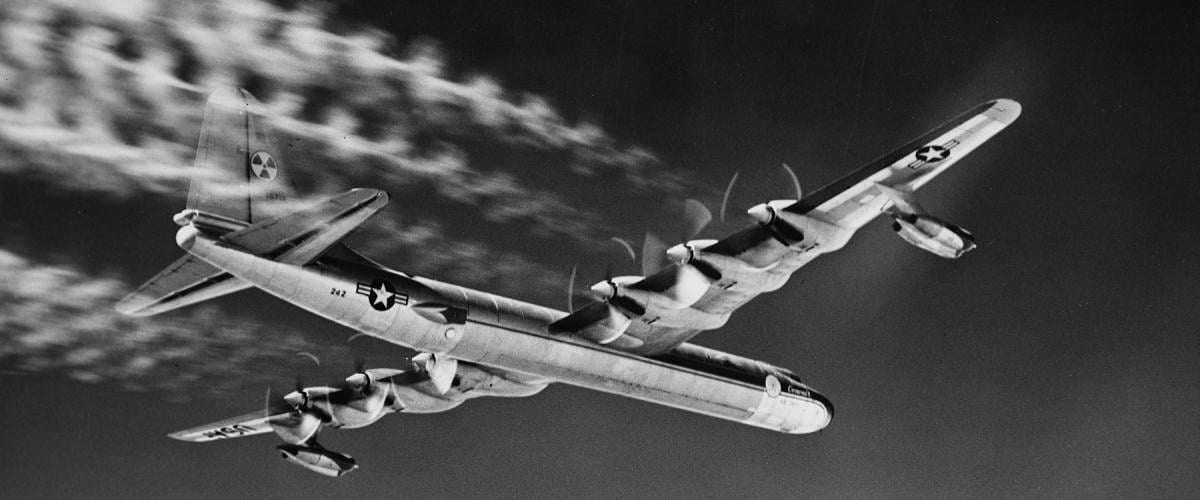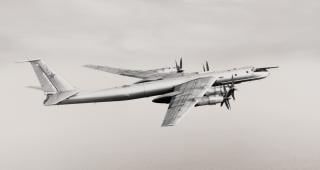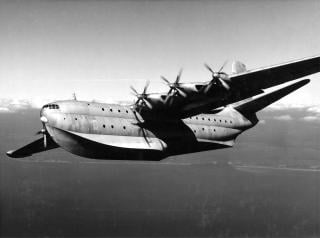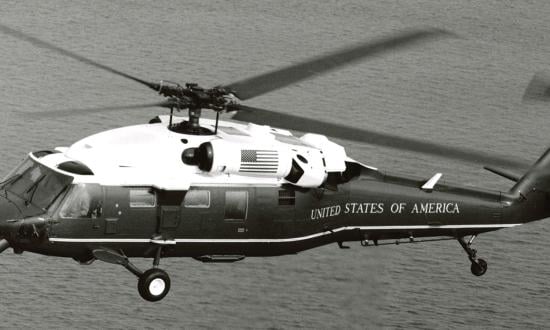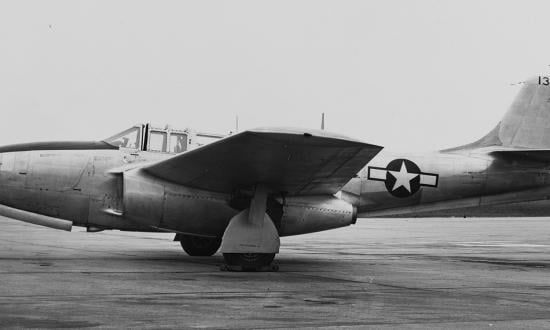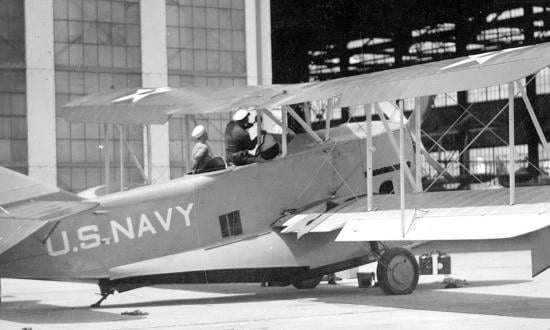The Manhattan District—the multi-service program that developed the atomic bomb—in 1946 awarded a contract to the Fairchild Engine and Airplane Company to determine the feasibility of using nuclear energy to power an aircraft.1 The Navy several years earlier had initiated a program to develop a nuclear-powered submarine, but that effort was suspended during the war, and its scientists and engineers were reassigned to the atomic bomb project.2
Several subsequent studies of a potential nuclear-powered aircraft were undertaken, sponsored in part by the Atomic Energy Commission (AEC), which had succeeded the Manhattan District. It was estimated then that a program to develop a nuclear-powered aircraft would take 15 years and cost more than a billion dollars.
In 1950, the recently established Air Force and the AEC joined in a “dynamic program” labeled Aircraft Nuclear Propulsion (ANP) to develop the data for the shielding, reactor materials, power plant, and aircraft design required to achieve nuclear-powered flight. The ANP program was estimated to require some 175 people at the managerial level and almost 8,000 people in prime-contract work and about the same number under subcontracts. In time, the ANP effort expanded to also consider nuclear power for unmanned aerial vehicles, including spacecraft.
By 1953, the program was pursuing development of a direct-cycle nuclear propulsion system, with the Air Force proposing to use a Convair B-36 bomber as a test bed. The aircraft—to be designated NB-36H—would be fitted with the nuclear reactor. However, the plane, powered by six piston engines, would not be “nuclear powered.” It would be used to investigate the issues involved in flying with a nuclear system, especially the crew shielding requirements.3
The original B-36 crew cabin was replaced by a massive lead- and rubber-lined, 11-ton section to accommodate a pilot, copilot, flight engineer, and two nuclear engineers. The cockpit windows had lead glass. The aircraft was fitted with a one-megawatt, air-cooled reactor weighing almost 18 tons. It was hung in the bomb bay so it could be easily loaded and unloaded; the radioactive source was unloaded and kept on the ground between test flights.
The NB-36H was modified with the nuclear system in 1955 and made its first flight on 17 September 1955. The plane made 47 flights through March 1957. A follow-on project to power a B-36 with nuclear energy, to be designated X-6, was not pursued.
A short time later an Air Force official declared: “Our progress has been such that we can confidently expect an airworthy nuclear powerplant to become available in about the length of time required to build a prototype airplane.” And, he said, the aircraft “will not necessarily be any larger than the current B-52. . . . The 4- or 5-man crews of such an aircraft will operate in a quiet and almost vibrationless cabin.”
Further describing the proposed nuclear-powered bomber, he added that because of the aircraft’s in-flight endurance, “A secluded rest area will be provided which will include beds, lavatory, kitchen, and even entertainment such as hi-fi, movies, and books.”4
That aircraft was never built.
As the NB-36H project was being developed, the Navy initiated studies of nuclear power for a large flying boat for the antisubmarine/patrol roles. Preliminary efforts centered on a modified Martin P6M turbojet flying boat. The Navy also proposed placing the nuclear power system in a British Princess seaplane, a massive flying boat developed by Saunders-Roe Limited.
The Princess first flew in 1952. It was the largest all-metal flying boat ever to have been constructed. Fitted with six turboprop engines, the Princess was designed to carry 100 passengers or, in a military transport configuration, 200 troops, with ranges of 5,500 miles and 3,500 miles, respectively. (Only one Princess aircraft was built; two others were canceled before completion.)
But the Princess flying boat was never fitted with a nuclear power plant, and there was no significant U.S. Navy effort to develop nuclear-powered aircraft. In the late 1950s, United Aircraft Corporation developed a small nuclear device that was proposed to power Howard Hughes’ “Spruce Goose” flying boat, the world’s largest aircraft at the time. The heavy shielding requirements defeated that scheme. (That aircraft, constructed largely of wood, had eight piston engines.)
In 1959, Representative Melvin Price, a subcommittee chairman of the Joint Committee on Atomic Energy, declared:
The ANP program has been beset by a multitude of problems since its inception. In my opinion these problems have not been so much a question of technical progress, which in general has been good, but rather involved the problems of ill-defined objectives and administrative indecision. Despite constant prodding by the Joint Committee over the years, these roadblocks have had a tendency of lingering on, to the detriment of all. Particularly vexing, after 12 long years, is the fact that the program still has no firm target date for first flight and our scientists and engineers in the field still don’t know where they stand as to the future prospects for the program.5
In 1955, the Soviet Union began a project to provide nuclear power to a Tu-20/Tu-95 (NATO Bear) aircraft. That was an impressive, swept-wing strategic bomber with four turboprop engines fitted with contrarotating propellers. The project—codename Lastochka (Swallow)—proved impractical because of the radiation hazard to the crew and soon was abandoned.6
Thus, neither U.S. nor Soviet atomic-powered aircraft flew.
1. This column is based in part on Lt. Col. Kenneth F. Gantz, USAF, ed., Nuclear Flight: The United States Air Force Programs for Atomic Jets, Missiles, and Rockets (New York: Duell, Sloan and Pearce, 1960), and published congressional hearings on the Aircraft Nuclear Propulsion Program and Nuclear Rocket Engine Development Program.
2. See N. Polmar, “The First Atomic Submarine,” Naval History 38, no. 1 (February 2024): 50–55.
3. The B-36 was the world’s largest piston-engine aircraft to be mass produced; 384 were built.
4. Lt Gen Roscoe C. Wilson, USAF, speech before the Aviation Writers Association Convention, Washington, DC, 15 May 1959.
5. Rep. Melvin Price, speech delivered to the Aircraft Luncheon Club, Washington, DC, 9 June 1959.
6. Steven J. Zaloga, The Kremlin’s Nuclear Sword: The Rise and Fall of Russia’s Strategic Nuclear Forces, 1945–2000 (Washington, DC: Smithsonian, 2002), 28.



